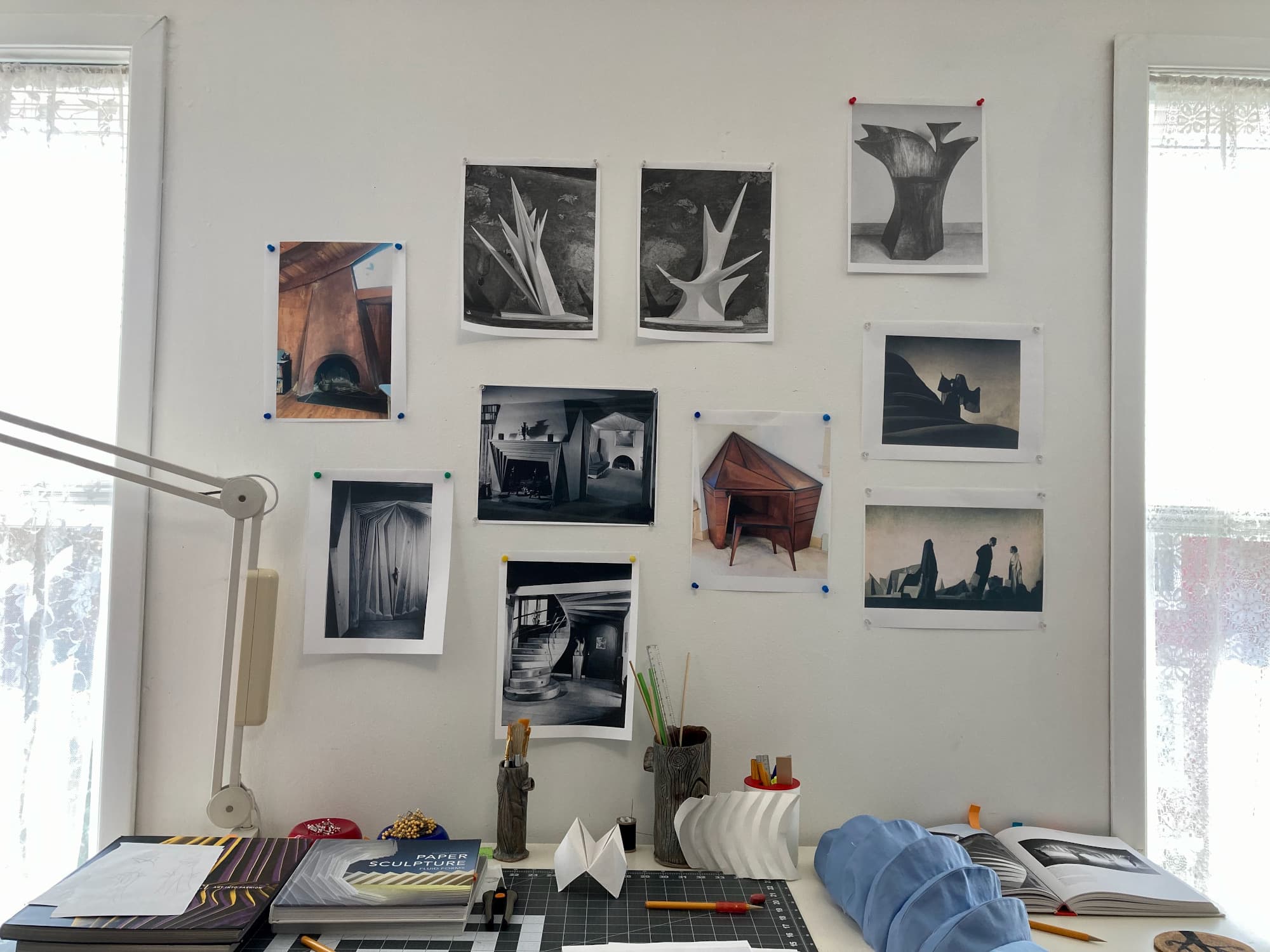This year we are delighted to host Philadelphia-based artist Martha McDonald as our 2023 WEM Artist-in-Residence. Beginning last winter, Martha began a series of visits to the WEM campus to explore and research the collection that will culminate in two weekends of site-specific performances this fall on September 23rd and 24th and November 11th and 12th (Tickets will be available later this year – keep an eye on our program calendar for details). An accomplished artist, Martha’s past projects have been performed at cultural and historic sites both locally and internationally, including the Black Mountain College Museum + Arts Center, Smithsonian National Portrait Gallery, and the Wheaton Arts and Cultural Center. They often feature handcrafted costumes and objects, which Martha activates through movement and song.
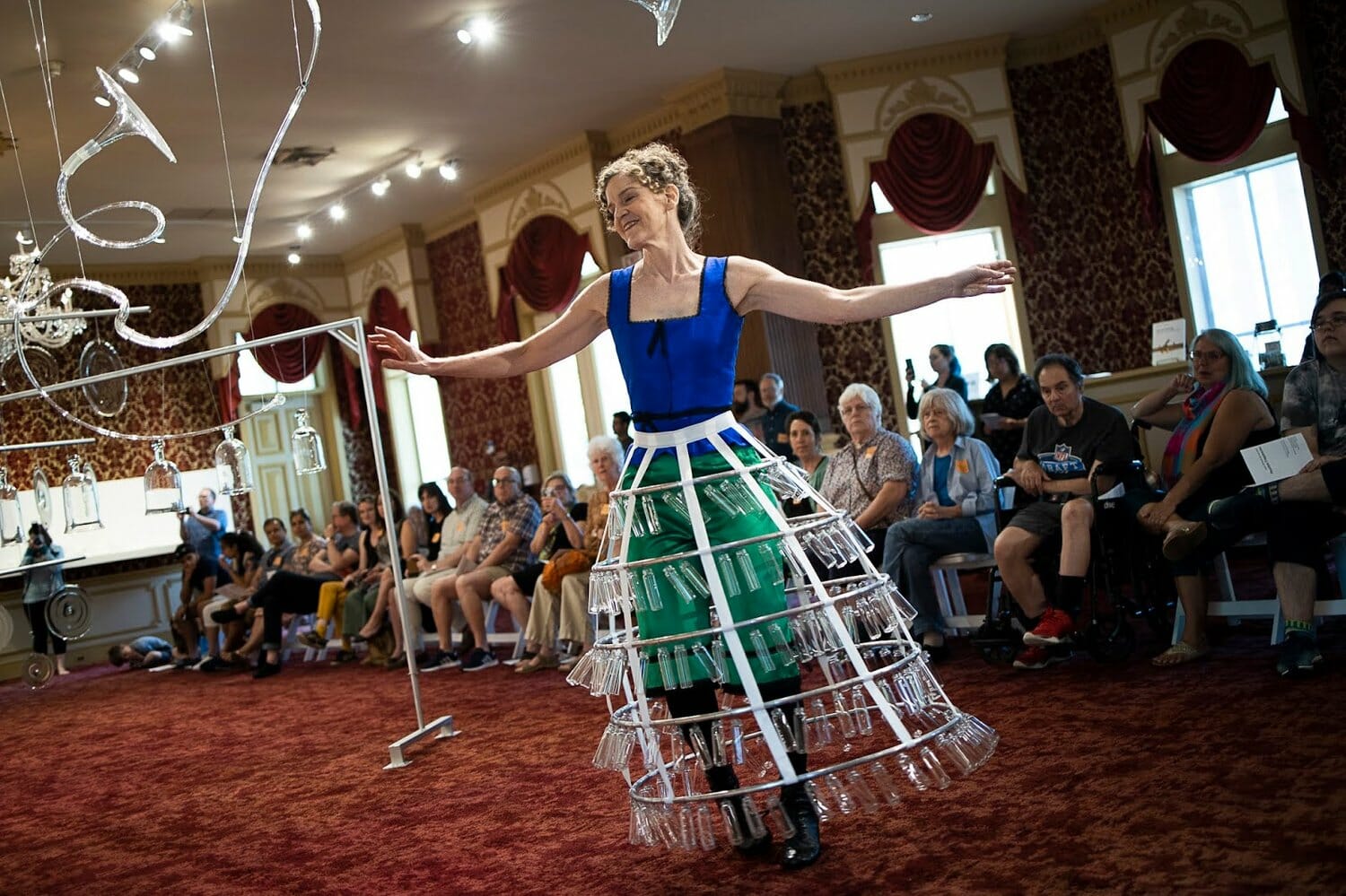
Martha McDonald performing Phantom Frequencies at Wheaton Arts and Cultural Center in Millville, NJ, in 2019, in collaboration with Laura Baird. Photo by Ryan Collerd.
Martha’s deep research into WEM’s art and archival collections has uncovered fascinating glimpses of Esherick we rarely explore – Esherick the poet, Esherick the set designer – and brings a new frame of focus to the stories our site can tell. She grounds her work through her own responses to the collections, archives, material practices, and site landscapes of an institution with which she’s working. Here at WEM, we began by casting a wide net over the myriad materials in WEM’s collections from which to draw inspiration – and by setting Martha up for overnight stays in the Esherick farmhouse “Sunekrest,” making her the first Artist-in-Residence since WEM began hosting contemporary artists in 2018 to stay on campus during the creation of her work. Over the course of several visits, Martha pulled at various threads in the collection, including boxes of Esherick’s sketches, watercolors, letters, photographs, and ephemera, to create the foundation for her performance. At the same time, she was able to soak in the qualities of WEM’s campus and end her days in Esherick’s first home on this hillside, which might be viewed as embodied and sensory site research.
Martha’s approach to artmaking is responsive, with aspects of form, design, movement, lyric, and collaboration coming together to produce the final piece. While the work is still very much in progress, we wanted to share a behind-the-scenes look at Martha’s process and influences along the way. So: what has Martha been looking at?
***
Form & Design
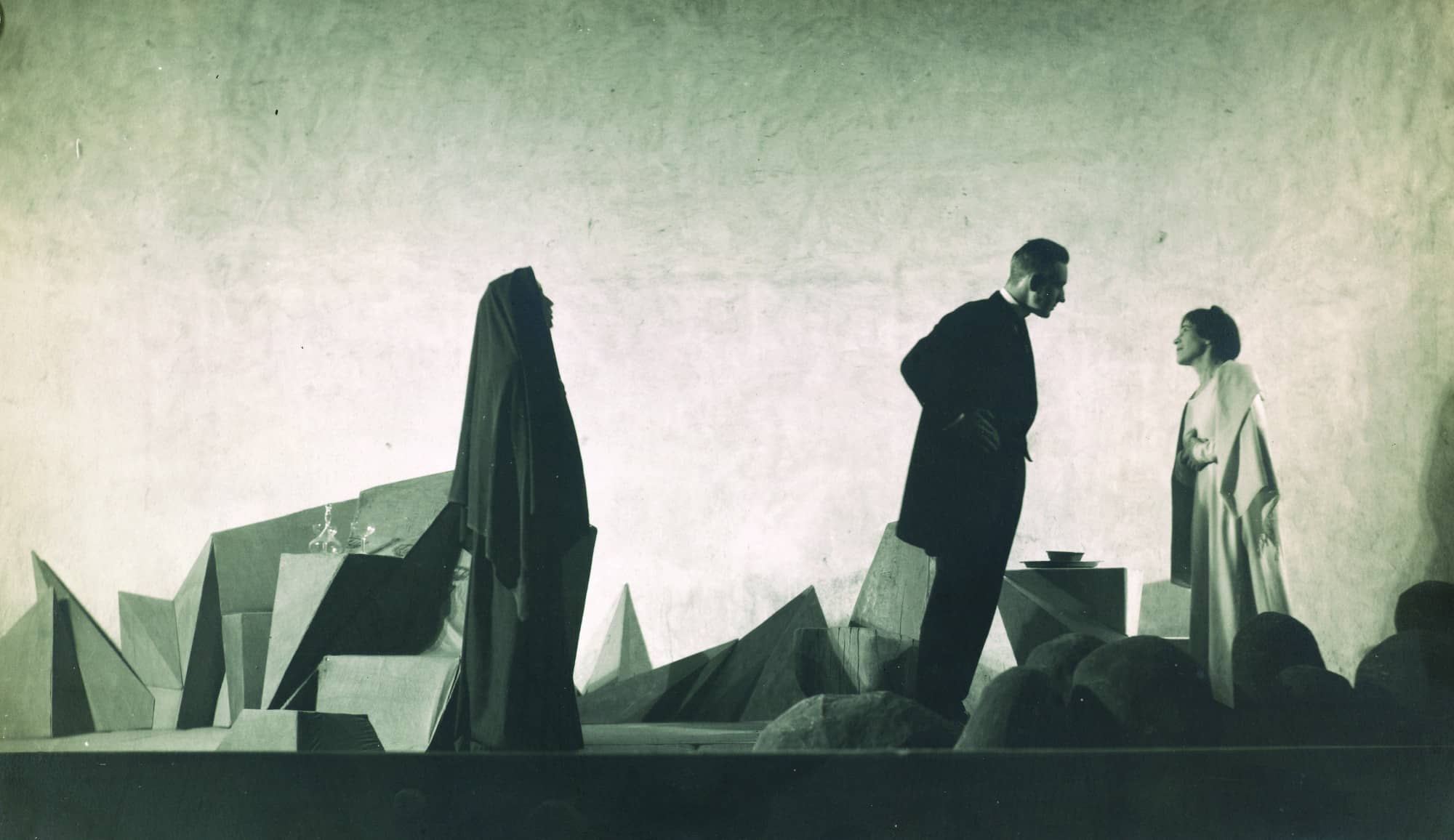
Wharton Esherick, stage set for Hedgerow Theatre’s production of Henrik Ibsen’s When We Dead Awaken, 1930. Wharton Esherick Museum Collection.
Early on, Martha’s curiosity was piqued by Esherick’s stage set for the Hedgerow Theatre’s production of Henrik Ibsen’s When We Dead Awaken. For this production, he experimented with angular prismatic forms, some of which functioned as both set pieces and furniture. While recognizing the markers of German Expressionism, Martha was struck by the influence of Rudolph Steiner’s philosophy of Anthroposophy on Esherick’s work, which values the twisting asymmetry of nature and takes a holistic view of humans and the spaces they occupy. The prismatic forms of these sets, and works such as the Fischer Corner Desk and Offense and Defense (two models for monuments that were never realized) further highlight these dual influences. The complex faceted forms that found their way into Martha’s costume design for a previous performance at Black Mountain College Museum + Art Center offer some ideas on how this interest might take shape in her performance at WEM.
***
Movement
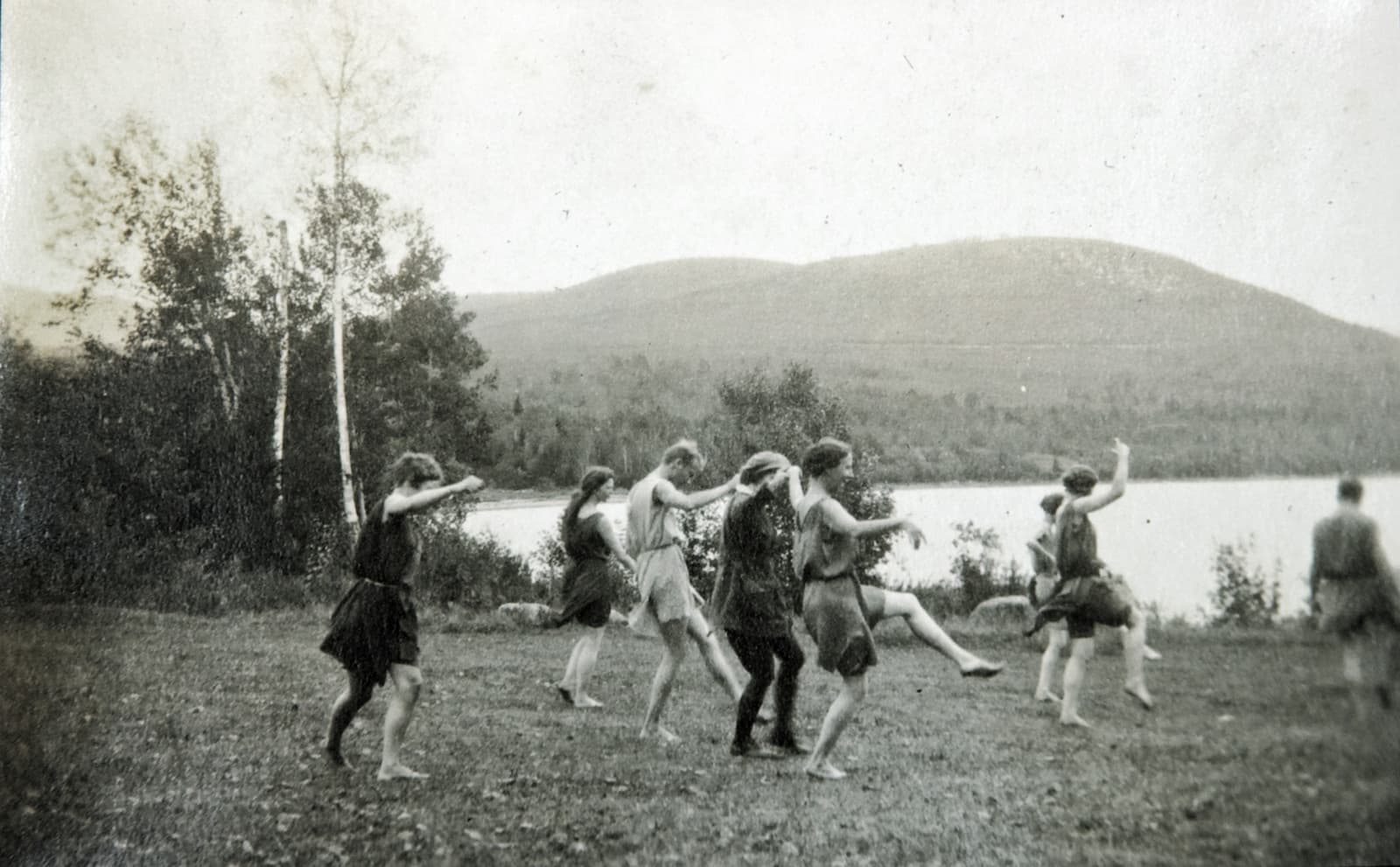
“Wharton Esherick and women dancing.” Photograph in Esherick Family albums, ca. 1920. Esherick Family Collection.
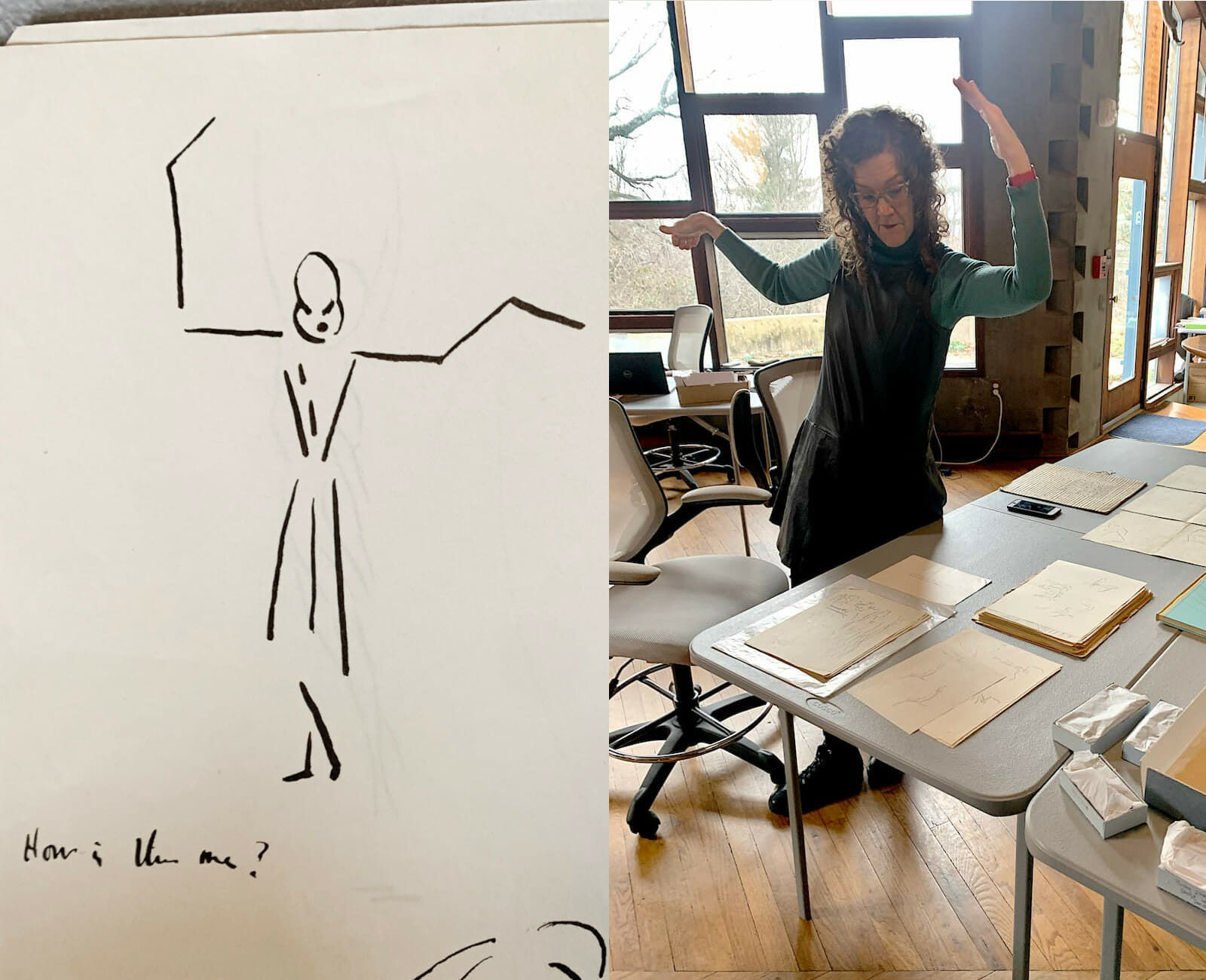
Esherick’s sketch of a dancer offers Martha inspiration for a pose.
Movement informs many of Martha’s performances, and Esherick’s exposure to dance through his wife Letty and his days visiting at the Gardner Doing Dance Camp has become an essential piece of Martha’s research. Martha has been digging into just what this form of rhythmic dance, closely tied to eurythmy, was all about and how it plays into Esherick’s story, from the numerous sketches and watercolors in which Esherick depicted dancers at the camp to the delightful photograph where he has joined in the dancing himself.
Fascinated by this form of movement which frames itself as visual speech, Martha attended a workshop at Eurythmy Spring Valley to deepen her understanding of this branch of Steiner’s philosophies. Eurythmy Spring Valley is part of the Threefold Educational Foundation in Chestnut Ridge, NY, a living community founded in 1926 and inspired by the teachings of Rudolf Steiner. Martha was able to visit the carved oak table by Esherick that is the centerpiece of the Threefold library during her tour of their campus. This immersion into a subject is essential to Martha’s process, “I love being an amateur working in spaces I’m not trained in.” In this way, Martha’s approach echoes the freedom Esherick found when he departed from the medium he formally studied, painting, and ventured into the worlds of architecture, woodworking, and furniture forms.
***
Lyric
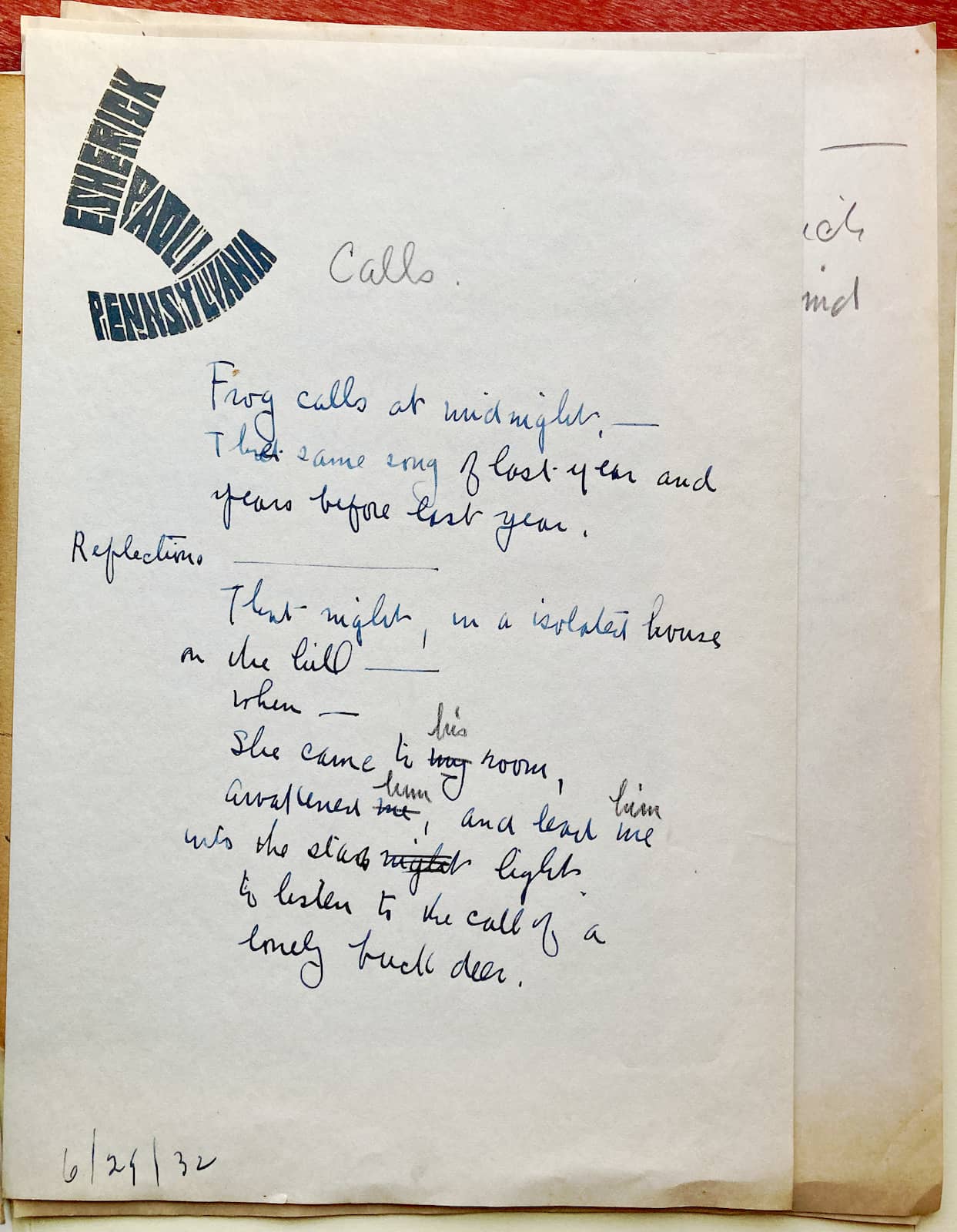
Handwritten note by Wharton Esherick, 1932. Wharton Esherick Museum Collection.
While the visualized language of eurythmy may play a role in Martha’s final piece, she is also composing a musical score with lyrics drawn, both directly and indirectly, from Esherick’s own words. During her research, Esherick’s letters and personal notes struck a chord with Martha, who thought of them as short poems. In these brief compositions, we hear Esherick’s reflections on topics including the fall colors emerging in the woods that surrounded him, solitude, and the expansive nature of time. As an artist notoriously reluctant to speak formally about his work, and who largely refrained from writing about it, Esherick’s words feel like a precious find as Martha gives them new life in song. Martha’s voice is a key part of her creative practice; at times in her career she has performed baroque music, while at others she’s sung Appalachian folk music to her own arrangements on the dulcimer. We’re excited to see Esherick’s words revitalized through her unique approach.
***
Collaboration
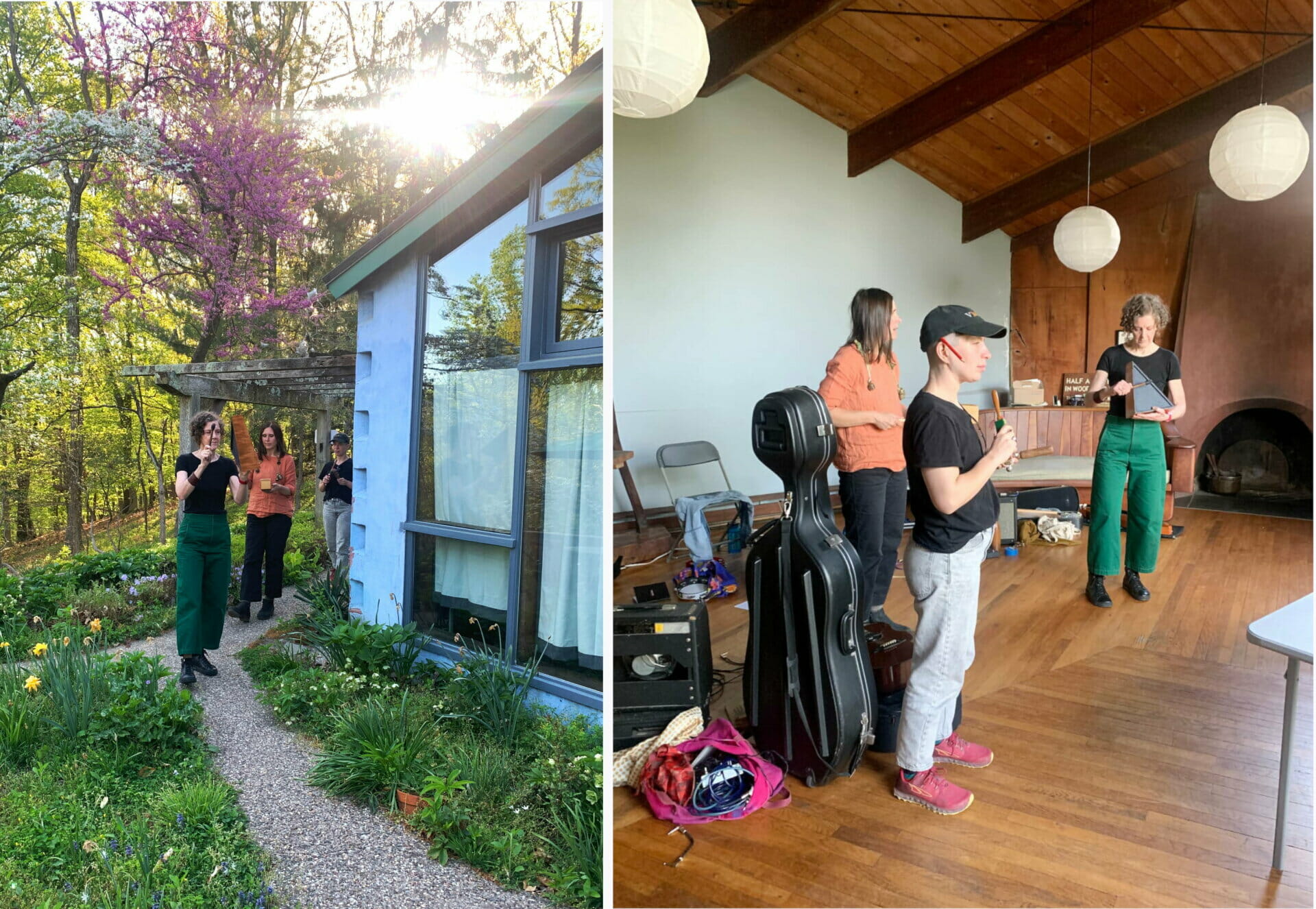
Martha McDonald, Brooke Sietinsons, and Miriam Goldberg rehearsing at the 1956 Workshop.
Similarly to Esherick, Martha’s approach to artmaking lends itself to collaboration. Orchestrating all aspects of the final work, she has involved numerous creatives, musicians, and fiber artists into the process – some longtime collaborators and others serendipitously found through the Esherick community – as she works toward the fall performances, all informed and crafted by her onsite research. For this project, Martha is working with Brooke Sietinsons on composing music and has invited Miriam Goldberg as a cellist and singer. She is also working with Dana Meyer as her costume collaborator and WEM’s own Casey Chew on set construction.
Conversations have been fascinating and far-ranging with Martha on site, from American Spiritualism and Theosophy to Appalachian dulcimer music and the emotional content of color. As Martha continues her residency, she continues to ruminate on these modes of movement, language, voice, and the story being told – and we can’t wait to see the final performance unfold.
Be sure to mark your calendars for Martha’s performances on September 23rd and 24th and November 11th and 12th, and keep an eye on our program calendar for tickets and details later this year.
***
Martha McDonald’s work has shown internationally at Brotfabrik, Berlin; Linden Centre for Contemporary Arts, Melbourne, Australia; Elizabeth Bay House, Sydney; the Tamworth Textile Triennial, which traveled throughout Australia; and Aberdeen Art Gallery & Museum, Aberdeen, Scotland. Nationally, her work has been shown at the Smithsonian National Portrait Gallery, Black Mountain College Museum + Arts Center, the John Michael Kohler Arts Center, and Evergreen Museum & Library at Johns Hopkins University.
Learn more about Martha at https://www.marthamcdonald.com.
Post written by Katie Wynne, Deputy Director of Operations and Public Engagement
April 2023

